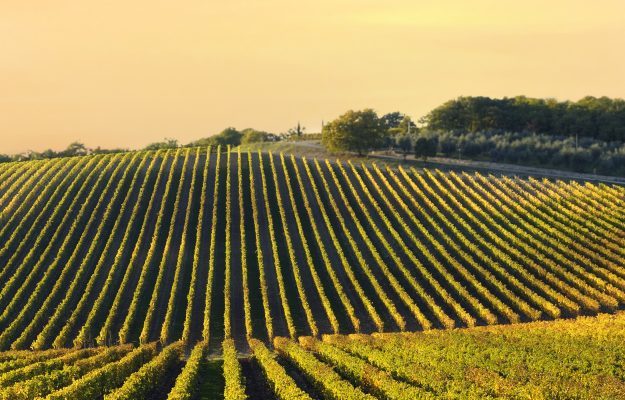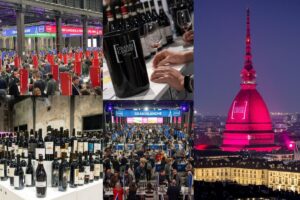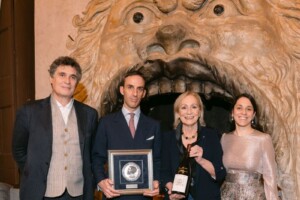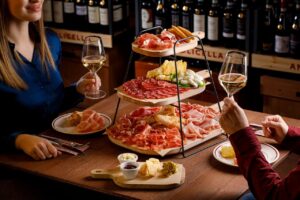The Italian wine scene, in just a few years, has undergone enormous changes, in the sign of aggregation and dimensional growth, driven by financial investments, which have given birth to the two most ambitious and lively players in the market: Argea, born from the operation conducted by Clessidra by putting together Mondodelvino with the Veneto-based Gruppo Botter, and Italian Wine Brands, the only wine group listed on the stock exchange. They are the ones, behind Cantine Riunite & Civ, the giant of Italian wine cooperatives, who complete the podium of the companies with the highest turnover in 2022, in the WineNews update on the financial statements of the big companies - private and cooperative - of the Italian wine industry. Almost all of the Italian wine bigwigs are growing, in the awareness that the effects of energy and raw material costs, as well as the war in Ukraine, will be felt in the global consumer market throughout 2023.
For Cantine Riunite & Civ, 2022 brought revenue growth of 10%, for 261 million euros, which, with Gruppo Italiano Vini (Giv) and foreign distribution companies, such as France's Carniato and the US-based Frederick Wildman & Sons, becomes 698.5 million (+10.1% over 2021). The Argea project, born from the operation conducted by Clessidra putting together Mondodelvino with the Veneto-based Gruppo Botter, after the acquisition of the Abruzzo-based griffe Zaccagnini saw revenues grow by +8.3%, to 455 million euros, but the goal, as announced by CEO Massimo Romani, is to “reach 500 million euros in revenues in the short term, remaining very attentive to market opportunities”. Slightly slower growth is that of Italian Wine Brands, which in 2022 marks +5.2%, for 430.3 million euros in revenues, on the wave of the acquisitions of Enovation Brands Inc. and Barbanera, the first winery owned in Tuscany.
Then in fourth position there is Caviro, the Emilia-Romagna cooperative group that approved its financial statements as of August 31, 2022, closing the year with a consolidated turnover of more than 417 million euros, for an increase of 7.1% over 2021, which confirms Caviro as a market leader in Italy and abroad, especially thanks to the results of Caviro Extra, the Faenza-based company that concretizes the Group’s circular economy, transforming wine-making by-products into alcohol, noble products, energy and fertilizers. It was not a great 2022 for Cavit, a group that has 5,250 conferring members, who cultivate more than 60% of Trentino’s vineyards, which closed its 2021/2022 consolidated financial statements (as of May 31, 2022) at 264.8 million euros, down 2.3% on the previous year, which nonetheless confirms Cavit's great financial solidity, for which exports account for 76% of business volume, with the United States and Canada still in the forefront as the main outlet countries.
Marchesi Antinori, which in 2021 had closed its accounts at 266 million euros in turnover, making it the leading family wine group in Italy (with profitability among the highest ever, ed.), should be confirmed in sixth position: a result, that of the centuries-old reality that has reached the 26th generation, with Albiera Antinori as president, which should see a further acceleration in the coming years, after the definition of the purchase of the California-based Stag’s Leap Wine Cellars, which has an average turnover of 80 million dollars. Just behind, with 260.4 million euros in sales, is Santa Margherita Gruppo Vinicolo, owned by the Marzotto family, in seventh place thanks to 18% growth over 2021, as certified by the financial statements approved in recent days.
At position No. 8 is Piedmont’s largest wine industry, Fratelli Martini, with 2022 sales of 237.6 million euros (+8.2%). Right behind, at position No. 9, La Marca, which specializes in sparkling wine production, with 2022 sales of 235.2 million euros (+30.9%). Closing out the top ten is the Trentino group Mezzacorona, one of the most important cooperatives in Italian and Trentino wine, for which 2022 was a year to remember: a historic record in turnover with more than 213 million euros (+8.6% over 2021) and 66.8 million euros paid out to members.
Close to 200 million euros (199.5, to be precise) is the 2022 turnover of Zonin 1821 - a mosaic of 9 estates covering 4,000 hectares, 1,600 of which are planted with vines - 85% of which will come from exports, in more than 140 countries around the world. Terre Cevico’s fiscal year 2021/2022 (August 1, 2021 - July 31, 2022), on the other hand, speaks of an aggregate turnover of €189.6 million (+15.3%), and a growth in exports to €72.9 million (+40%), which accounts for 43% of the consolidated revenues of the twelfth Italian wine group. At position No. 13 Vi.V.O. Cantine (Viticoltori del Veneto Orientale), a cooperative reality that puts together 6,300 hectares of vineyards for more than 2,000 producer members, whose sales revenues for the 2021/2022 fiscal year amount to 164 million euros: a +41.6% driven by higher volumes of product, bulk and packaged, but also by price growth.
Excellent performance for Marchesi Frescobaldi, which closed its 2022 budget at 153 million euros (+17%): the historic family winery that, from Tuscany, has become a national galaxy, has, meanwhile, been enriched by another “planet”, Poggio Verrano, in the Grosseto municipality of Montiano, 27 hectares of Cabernet Sauvignon, Merlot, Alicante, Sangiovese, and Cabernet Franc, purchased by Francesco Bolla, heir to the Veronese family that founded the Bolla winery in the late 19th century, now part of the Gruppo Italiano Vini.
In fifteenth position is another top player, the Lunelli Group, which put up a 13% growth in 2022, for a turnover of 152 million euros, 102 of which were generated by the Ferrari Trento brand, the symbol of Trentino’s classic method bubbles, the rest by Tenute Lunelli in Umbria, Bisol 1542 in Prosecco, Segnana distillates, Surgiva water and the legendary Tassoni citron liqueur.
Record results also for the Prosecco “specialist”, Villa Sandi, in sixteenth place: the Crocetta del Montello-based winery closed 2022 with a turnover at 145 million euros, with growth over 2021 of 20%. Speaking of new entries, Cantina di Soave, Cantina di Montecchia, Cantina di Illasi, and Terre al Lago became Cadis 1898, which closed its 2022 financial statements with a turnover of €143.8 million (+16% over 2021), 66% of which was made up of the Italian market and 34% of which was made up of the foreign market, despite a -6% drop in volumes sold.
And again, at position No. 18 we find Schenk Italia, which arrived in 2022 at 140 million euros (+7%) for 55 million bottles sold, at No. 19 the Treviso-based Mionetto winery, which closed with a turnover of 139 million euros (+33%), and an important result on the export front (80% of production), which recorded double-digit growth (23% in terms of volume) on the markets. In twentieth place is Cooperativa Ermes, the top-level wine cooperative with the highest number of cultivated hectares in Italy, present in Sicily, Veneto, Puglia and Abruzzo, together with Cantina sociale Valle di Sangro in Atessa: the latest consolidated turnover figure is 130 million euros, on which the sale of bulk wine has an impact, and not a little.
At No. 21, among the Italian wineries and wine groups with the highest turnover in 2022 was Ruffino, which closed the year at 124 million euros in revenues, in line with the previous year, with an operating profit (ebit) of 10% and 28.6 million bottles sold (-4%). The result is practically identical to that of the Collis Group, which has pro forma consolidated revenues of 124 million euros, with 74 million bottles sold, more than two-thirds in more than 70 foreign countries, covering all or almost all sales channels, from large-scale distribution to Horeca. At position No. 23 Piccini1882, which has five estates scattered between Central and Southern Italy, covering more than 200 hectares of vineyards (with Fattoria di Valiano in Chianti Classico, Tenuta Moraia in Maremma, Villa al Cortile in Montalcino, Regio Cantina in Vulture, and Torre Mora on Etna), to which the Piedmontese brand “Porta Rossa” was added a year ago, and closed 2022 with a 10% increase in turnover, to 110 million euros.
At position No. 24 there is another large cooperative group from the Northeast, Vignaioli Veneto Friulani, which has a turnover of 108 million euros, slightly more than Contri Spumanti (106.9 million euros), in which Hyle Capital Partners, an asset management company that promotes and manages private equity funds that invest in the capital of small and medium-sized Italian companies, has invested heavily through its “Finance for Food One” fund. At position No. 26 is another Prosecco bigwig, Serena Wines 1881, which exceeds 100 million in sales, more than half of which are abroad, with 90% of the turnover achieved in bars and restaurants, and the goal, for 2023, to consolidate results and exports, focusing on markets in the U.S., Canada and France.
Finally, Prosit Group, a wine group led by Sergio Dagnino and participated in by the “Made in Italy Fund” by Quadrivio & Pambianco, which was established in 2018, and which, in 2022, reached a share of 90 million euros in sales with 26.5 million bottles produced, with five brands, namely Cantina di Montalcino (Tuscany), Torrevento (Apulia), Nestore Bosco (Abruzzo), Tenuta di Collalbrigo (Veneto), and La Cacciatora by Casa Vinicola Caldirola.
Copyright © 2000/2025
Contatti: info@winenews.it
Seguici anche su Twitter: @WineNewsIt
Seguici anche su Facebook: @winenewsit
Questo articolo è tratto dall'archivio di WineNews - Tutti i diritti riservati - Copyright © 2000/2025









































































































































































































